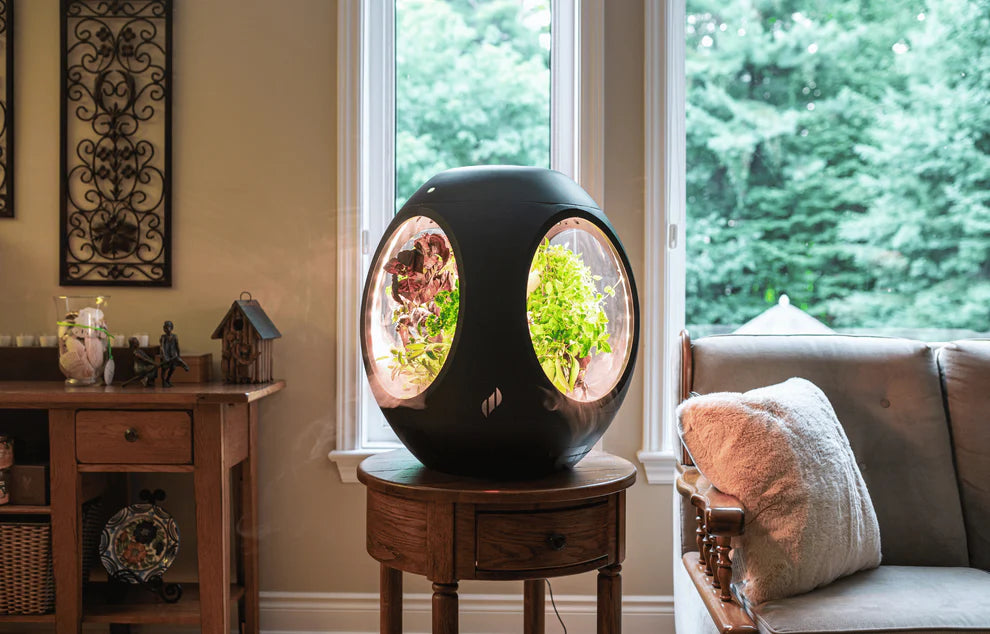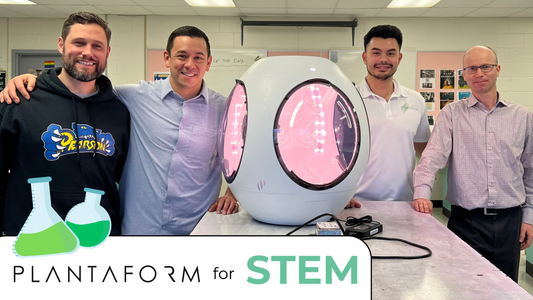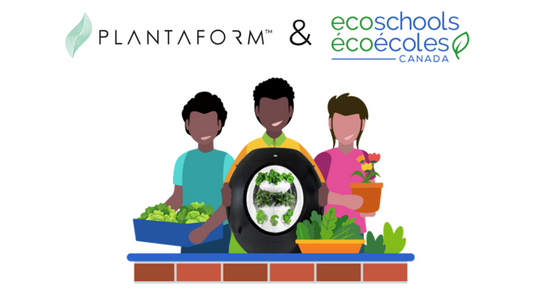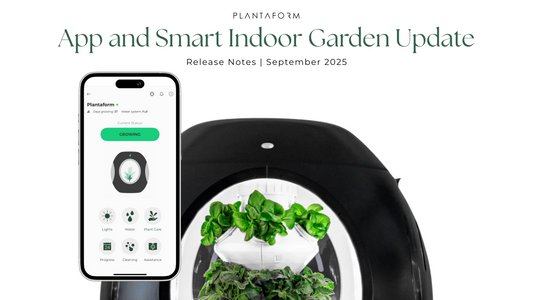Indoor Gardening Without Soil: An Introduction to Aeroponics and Fogponics

Indoor Gardening Without Soil:
An Introduction to Aeroponics and Fogponics
Smart indoor gardening has taken a fascinating turn with the advent of aeroponics, a soilless method of plant cultivation that has revolutionized the way you grow your favorite flowers, vegetables, and herbs. In this article, we'll delve into the world of aeroponics, explore its benefits, and discuss how it works for you.
We'll also introduce you to fogponics, a subset of aeroponics, and share the advantages of using aeroponic systems for your indoor gardening. Lastly, we'll mention how our system ties into this remarkable method of cultivation for you.

Benefits of Aeroponic Gardening
Aeroponic gardening offers numerous advantages over traditional soil-based methods, making it an appealing option for indoor gardeners. Some of the key benefits include:
Faster Growth Rates: Plants grown aeroponically experience accelerated growth rates as they have unrestricted access to oxygen and nutrients, which are delivered directly to their roots.
Higher Yields: Aeroponic systems often result in increased yields due to their optimal growing conditions and the efficient delivery of nutrients.
Water Conservation: Aeroponics uses significantly less water compared to conventional soil-based gardening methods, as nutrient-rich water is recirculated within the system.
Reduced Pesticide Use: The controlled environment of aeroponic systems reduces the risk of pests and diseases, thereby minimizing the need for chemical pesticides.
Space Efficiency: Aeroponic systems are designed for vertical growth, allowing gardeners to cultivate more plants within a smaller footprint, making it an ideal choice for urban dwellers or those with limited space.
How Aeroponic Systems Work
Aeroponic systems work by suspending your plant roots in the air and delivering nutrient-rich water directly to them through a fine mist or spray. This approach eliminates the need for soil and ensures your plants receive an optimal balance of nutrients, oxygen, and water.
The main components of an aeroponic system typically include:
Support Structure: Plants are held in place using a support structure, such as net pots or foam inserts, which allows their roots to dangle in the air.
Nutrient Reservoir: A reservoir stores the nutrient solution, which is a mixture of water and essential plant nutrients.
Misting or Spraying Mechanism: A pump and nozzle system sprays the nutrient solution onto the exposed roots at regular intervals, providing them with the necessary nutrients and hydration.
Drainage and Recirculation: Excess nutrient solution is collected and returned to the reservoir, where it is reused in a continuous cycle.

Fogponics: A Unique Aeroponic Approach
Fogponics, a subset of aeroponics, works by utilizing a high-pressure fogging system to deliver nutrient-rich water to your plant roots. Instead of spraying or traditional misting, fogponics generates a fine fog or mist consisting of tiny water droplets. This creates an even more efficient nutrient delivery system for your plants, as the smaller droplets are more easily absorbed by their roots.
Fogponics in the Real World: From NASA to Commercial Agriculture
When it comes to fogponics, this innovative gardening technique has made quite an impact in the real world, finding its way from NASA's cutting-edge research to commercial agricultural and horticultural applications.
NASA's Stellar Success with Fogponics
The world-renowned space agency, NASA, has been a trailblazer in researching and implementing fogponics for various space missions and experiments. They quickly recognized the potential of the technology as a valuable technique for growing plants in microgravity environments, where traditional soil-based methods simply aren't practical.
By harnessing the power of fogponic systems, NASA has successfully grown crops such as lettuce and other leafy greens, providing astronauts with fresh produce during long-duration space missions. The remarkable success of these experiments has showcased the efficiency and adaptability of them, proving their viability even in the most challenging environments.
Thriving Commercial Applications of Fogponics
But it's not only NASA that embraced fogponics — this advanced approach to gardening has made a splash in various agricultural and horticultural settings. Commercial greenhouses and vertical farming operations have jumped on the fogponic bandwagon to maximize space utilization, improve water and nutrient efficiency, and ultimately, increase overall crop yields.
The technique has also found a home in the cultivation of delicate and high-value crops, such as medicinal plants and rare herbs. Fogponics provides an optimal growing environment with a reduced risk of contamination, making it the ideal choice for nurturing these precious plants.
The Plantaform Indoor Garden : A Fogponic Gardening Solution
We're proud to introduce you to the Plantaform Smart Indoor Garden, a cutting-edge solution for those looking to delve into the exciting world of aeroponics and fogponics. Our innovative indoor gardening system combines the best of both approaches, providing an optimal growing environment for a variety of plants, herbs, vegetables, and edible flowers.
The Plantaform device incorporates advanced fogponic technology, ensuring your plants receive the most efficient nutrient delivery possible. With its user-friendly design and app connectivity, we've made it a breeze for you to monitor and maintain your garden, even if you're new to indoor gardening, allowing you to grow all year round from the comfort of your own home, with no green thumb required.
By choosing a high-quality smart indoor garden like the Plantaform device, you'll enjoy the myriad benefits of soilless indoor gardening, including faster growth rates, higher yields, water conservation, reduced pesticide use, and space efficiency.

Advantages of Using Aeroponic Systems for Indoor Gardening
Compared to traditional or custom setups, aeroponic systems offer several key advantages for indoor gardeners:
Ease of Use: Aeroponic systems like Plantaform's Smart Indoor Garden are designed with user-friendly features, such as app connectivity and self-watering mechanisms, which simplify the gardening process.
Modularity and Scalability: Aeroponic systems can be easily expanded or adapted to accommodate a wide range of plant varieties and growing conditions.
Improved Plant Health: The controlled environment of aeroponic systems minimizes the risk of pests and diseases, leading to healthier, more robust plants.
Consistent Results: With precise control over nutrient delivery and environmental conditions, aeroponic systems enable gardeners to achieve consistent, high-quality results throughout the year.
Cleanliness: Aeroponic systems maintain a clean and sterile growing environment, reducing the risk of soil-borne pathogens and pests.
The Bottom Line
Aeroponics and fogponics open up new possibilities for indoor gardeners like you, offering a range of benefits and advantages over traditional soil-based methods. By embracing these innovative growing techniques, you can enjoy fresh, homegrown produce all year round while contributing to a more sustainable and environmentally friendly future.
With systems like the Plantaform device, smart indoor gardening has never been easier or more efficient. Experience the thrill of cultivating your own herbs, vegetables, and edible flowers in a soilless environment and discover the countless rewards of fogponic gardening with us.






